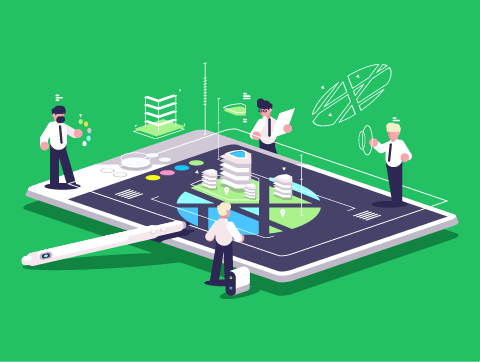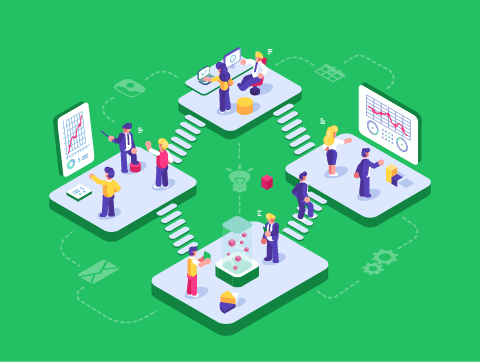Introduction
A digital project is a project that uses technology to achieve specific goals. This could involve software development, website design & development, e-commerce, data analysis & much more.
Before implementing a digital project, a business must determine if the project is feasible. “Feasible” means that the project can actually be delivered and will bring a benefit to the business.
In this lesson, we’ll learn about the factors that determine the feasibility of a digital project:
- Benefits and drawbacks
- Risks, constraints, and dependencies

Benefits
When looking at building a new system, the overall benefit to the business must be assessed.
There is no point in spending time and money implementing a new IT system if it doesn’t make things better for the business or its employees.
The benefits of a digital project can include any of the following:
- Increased efficiency
- Better user experience
- Improved data management
- Increased collaboration and communication
- Cost savings

Drawbacks
However, any benefits must be balanced against possible drawbacks.
The drawbacks of a digital project can include any of the following:
- Technical problems
- High development costs
- Maintenance expenses
- Employee resistance
- Data privacy concerns
The benefits & drawbacks of a project are not guaranteed and may vary depending on the specific project.
Let’s look at an example to see how the pros and cons might affect the project.

Automated Stock Control System – Benefits
Increased Accuracy
Automated systems are designed to provide accurate and up-to-date information about stock levels, reducing the risk of overstocking or stock shortages.
Increased Efficiency
Automated systems streamline many of the manual processes involved in stock control, reducing the time and effort required to manage inventory.
Improved Decision-Making
Automated systems provide valuable data and insights, allowing companies to make informed decisions about inventory management, stock replenishment, and optimisation.

Automated Stock Control System – Benefits
Cost Savings
Automated systems reduce the need for manual labour, reducing labour costs and freeing up employees to focus on other tasks.
In addition, by reducing stock shortages and overstocking, companies can reduce the cost of carrying excess inventory.

Automated Stock Control System – Drawbacks
Initial Costs
Implementing an automated system can be expensive, requiring significant investment in software, hardware, and training.
Technical Difficulties
Automated systems can be complex and technical, requiring specialised knowledge to set up and maintain.
Dependence on Technology
Automated systems rely on technology, which can be vulnerable to outages and other technical issues.
Resistance to Change
Some employees may be resistant to change and may be uncomfortable with using a new system.

Risks, Constraints & Dependencies
Another critical aspect of determining the feasibility of a digital project is to assess the:
- Risks
- Constraints
- Dependencies
Let’s look at each of these in more detail.

Risks
Risks are problems that may or may not occur during the project development that could cause the project to fail.
Risks may include:
- The organisation runs out of money to develop the system.
- Your employees might encounter problems they don’t know how to solve.
- It may not be possible to complete the project by the required date.
- Members of staff fall ill or leave the company, meaning that the project might not be finished on time.
- The legislation around the software changes while the project is being carried out.

Constraints
Constraints are problems or restrictions that you already know exist and limit what can be achieved in the digital project.
Constraints may include:
- There is only a fixed amount of money available for the project
- Staff members must have the skills to build and implement the system, or new staff members need to be hired.
- The project has to be completed by a certain date
- You don’t have enough staff members to complete the project
- The system must conform to all existing IT Legislation.

Dependencies
Dependencies are where one task or activity has a relationship to another, i.e., one task may not start until a previous activity has been completed.
For example, a digital project may depend on the availability of certain software or hardware, the expertise of certain personnel, or the completion of another project.
Dependencies may belong to one of the following four categories:
- Mandatory
- Discretionary
- External
- Internal
Let’s look at each of these in more detail.

Dependencies
Mandatory
This is when one activity cannot be started until another has been completed, e.g., the project cannot begin until the team members are ready to begin working on it.
Discretionary
This is where the order of activities has a preferred sequence, but the order is not fixed and can be changed if the need arises, e.g., the team decides to work on the user interface before building a database.

Dependencies
External
The project relies on activities outside the project, e.g., the project cannot begin until it has been approved by stakeholders.
Internal
These are activities within the project that rely on each other, e.g., the software cannot be installed until the hardware has been purchased and configured.

Lesson Summary
“Feasible” means that the project can actually be delivered and will bring a benefit to the business.
There are multiple potential benefits and drawbacks of a digital project.
A risk is a problem that may or may not happen. Risks could include technical failures, security breaches, project delays, and budget overruns.
A constraint is a problem that you are aware of before a project starts that could have an impact on the success of the project.
A dependency is where one activity needs to be completed before another begins. There are four kinds of dependencies: mandatory, discretionary, internal, and external.
